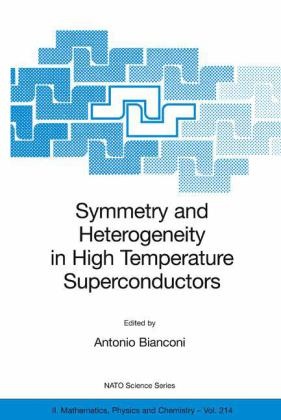Read more
The object of this book is the quantum mechanism that allows the macroscopic quantum coherence of a superconducting condensate to resist to the attacks of high temperature. Solution to this fundamental problem of modern physics is needed for the design of room temperature superconductors, for controlling the decoherence effects in the quantum computers and for the understanding of a possible role of quantum coherence in living matter that is debated today in quantum biophysics. The recent experimental results on nanoscale phase separation and the two component scenario in high T c in doped cuprate and the lower symmetry in the superconducting elements at high pressure area presented. The compelling evidence for multiband superconductivity in MgB 2 that provides the simplest system for testing the high T c theories, and plays the same role as atomic hydrogen for the development of the quantum mechanics in the twenties, is one of the main points of the book. The multiband superconductivity enhances the critical temperature from the low T c range T c < 19K, to the high temperature range, T c = 40K. The heterogeneous structure, the superlattice of superconducting layers, determines the disparity and different spatial location of the Bloch wave functions of electrons at the Fermi level that provides in superconductivity the clean limit. The chemical potential can be tuned by atomic substitutions without increasing inelastic single electron interband scattering. The Feshbach shape resonance in the exchange-like off-diagonal interband pairing term, as predicted since 1993, appears to be the mechanism for evading temperature decoherence effects and enhancing the critical temperature.
List of contents
Acknowledgements. Preface.
I. Electronic and Exchange-Like Pairing Scenarios.
Symmetry and Higher Superconductivity in the Lower Elements; N.W. Ashcroft. Feshbach Shape Resonances in Multiband High Tc Superconductors; A. Bianconi, M. Philippi. Modelling Cuprate Gaps in a Composite Two-Band Model; N. Kristoffel, P. Rubin. Multi-Gap Superconductivity in MgB 2 ; S.P. Kruchinin, H. Nagao.
II. Anomalous Electron-Phonon Interaction.
Electron-Lattice Coupling in the Cuprates; T. Egami. Symmetry Breaking, Non-Adiabatic Electron-Phonon Coupling and Nuclear Kinetic Effect on Superconductivity of MgB 2 ; P. Banacky.
III. Phase Separation and Two Components Cuprates.
Microscopic Phase Separation and Two Type of Quasiparticles in Lightly Doped La 2-x Sr x CuO 4 Observed by Electron Paragmagnetic Resonance; A. Shengelaya et al. Phase Separation in Cuprates Induced by Doping, Hydrostatic Pressure or Atomic Substitution; E. Liarokapis. Structural Symmetry, Elastic Compatibility, and the Intrinsic Heterogeneity of Complex Oxides; S.R. Shenoy et al. A Case of Complex Matter: Coexistence of Multiple Phase Separations in Cuprates; G. Campi, A. Bianconi. Anisotropy of the Critical Current Density in High Quality YBa 2 Cu 3 O 7-d . Thin Film; A. Taoufik et al.
IV. Symmetry of the Condensate.
Symmetry of High-Tc Superconductors; F. Iachello. Evidence for d-Wave Order Parameter Symmetry in Bi-2212 from Experiments on Interlayer Tunneling; Yu.I. Latyshev.
V. Exotic Superconductivity.
Electronic State in Co-Oxide Similar to Cuprates? S. Maekawa, W. Koshibae. Oxide Superconductivity; J.D. Dow. Superconductivity Versus Antifererromagnetic SDW Order in the Cuprates and Related Systems; L.S. Mazov.
Author Index. Subject Index. Figure Index. Table Index.
Summary
Proceedings of the NATO Advanced Research Workshop on Symmetry and Heterogeneity in High Temperature Superconductors, Erice-Sicily, 4-10 October 2003held in Erice-Sicily, 4-10 October 2003

